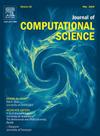基于超视场蚁群算法的复杂环境路径规划
IF 3.7
3区 计算机科学
Q2 COMPUTER SCIENCE, INTERDISCIPLINARY APPLICATIONS
引用次数: 0
摘要
针对传统蚁群算法在复杂环境下收敛速度慢、搜索能力差的问题,提出了一种超视点蚁群算法。在增强型蚁群算法中,首次引入了超视图蚁的概念和视图选择机制。采用Dijkstra算法确定超视图蚂蚁可达节点集的最优路径,并利用所设计的信息素计算方法完成状态转移。此外,本文还建立了蚂蚁知识库,并将其引入状态转换类型,使蚂蚁之间的信息通信更加充分。通过历史路径更新知识库,并自适应加载知识库的值。然后,建立了蚁视萎缩机制来平衡算法的时间效率,并给出了信息素补偿方法来保证算法对最优路径的吸附。最后,通过在各种复杂环境下的实验,对不同性能参数的统计表明,本文算法的结果优于包括传统蚁群算法在内的现有算法。本文章由计算机程序翻译,如有差异,请以英文原文为准。
Path planning of complex environment based on hyper view ant colony algorithm
A hyper view ant colony algorithm is developed to deal with the issues of sluggish convergence and poor search ability of traditional ant colony algorithms in complex environments. The concept of hyper view ant and view selection mechanism are first introduced in the enhanced ant colony algorithm. Dijkstra algorithm is used to determine the optimal path for the reachable node set of hyper view ants, where the state transition is accomplished using the designed pheromone calculation method. In addition, this paper creates an ant knowledge database and introduces it into the state transition type, which makes the information communication between ants more adequate. The knowledge database will be updated via historical path, and its value will be adaptively loaded. Then, an ant view atrophy mechanism is developed to balance the time efficiency of the proposed algorithm, and a pheromone compensation method is given to ensure the adsorption of algorithm to optimal path. Finally, by the experiments in various complex environments, the statistics of different performance parameters show that the results of the proposed algorithm in this paper are better than the ones of the existing algorithms including traditional ant colony algorithm.
求助全文
通过发布文献求助,成功后即可免费获取论文全文。
去求助
来源期刊

Journal of Computational Science
COMPUTER SCIENCE, INTERDISCIPLINARY APPLICATIONS-COMPUTER SCIENCE, THEORY & METHODS
CiteScore
5.50
自引率
3.00%
发文量
227
审稿时长
41 days
期刊介绍:
Computational Science is a rapidly growing multi- and interdisciplinary field that uses advanced computing and data analysis to understand and solve complex problems. It has reached a level of predictive capability that now firmly complements the traditional pillars of experimentation and theory.
The recent advances in experimental techniques such as detectors, on-line sensor networks and high-resolution imaging techniques, have opened up new windows into physical and biological processes at many levels of detail. The resulting data explosion allows for detailed data driven modeling and simulation.
This new discipline in science combines computational thinking, modern computational methods, devices and collateral technologies to address problems far beyond the scope of traditional numerical methods.
Computational science typically unifies three distinct elements:
• Modeling, Algorithms and Simulations (e.g. numerical and non-numerical, discrete and continuous);
• Software developed to solve science (e.g., biological, physical, and social), engineering, medicine, and humanities problems;
• Computer and information science that develops and optimizes the advanced system hardware, software, networking, and data management components (e.g. problem solving environments).
 求助内容:
求助内容: 应助结果提醒方式:
应助结果提醒方式:


